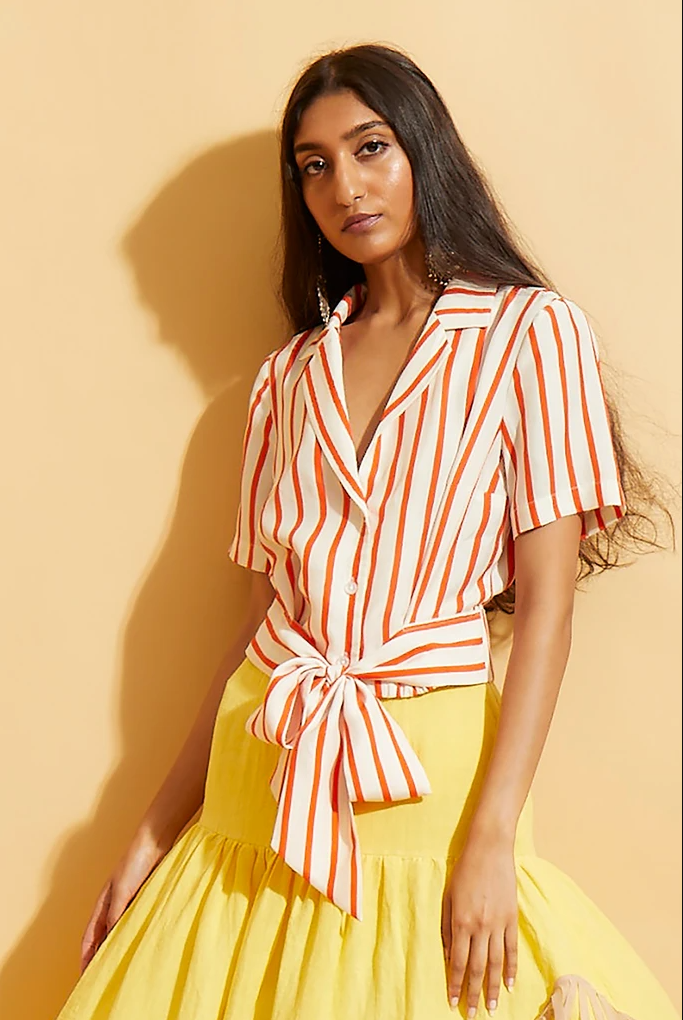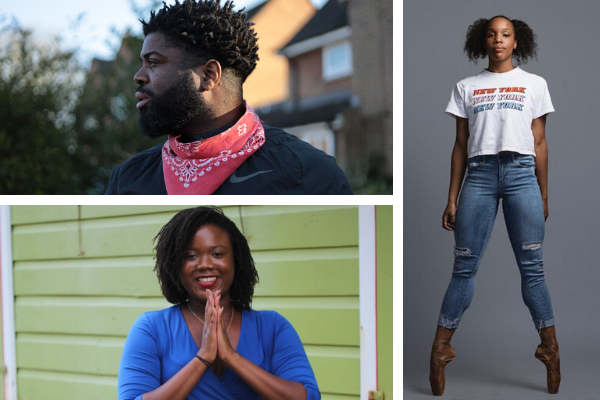
It can be exhausting trying to make oneself palatable.
For many Black people, altering their appearance and mannerisms to fit white expectations is a matter of instinct. In many cases, the trauma of having to alter one’s appearance to meet arbitrary white standards of presentableness and respectability is a generational one, and living with that history takes serious emotional labor.
Racism doesn’t always present in a white hood, shouting slurs and waving a Confederate flag. Most often, racism presents as intolerance couched as concerns around professionalism and fears around personal safety. It is the blithe cherry-picking of Black anatomy ― the booty, the lips, the complexion, the texture of hair, even ― to embellish white beauty standards and fuel celebrity without addressing glaring representation issues. It is snap judgements from well-meaning folks, people so convinced of their niceness it hurts all the more. It is class assumptions; it is subliminal and overt messaging in the media; it is being routinely pressured into accommodating white fragility; it is being gaslit into second-guessing your style choices, into being made to feel like a transgressor for doing something as natural and joyous as letting your hair be.
HuffPost spoke with four individuals who go through this a lot. They shared their experience being locked in a battle that’s invisible to the self-appointed arbiters of worth. Even in purportedly safe, neutral, equal spaces, they feel the stress of over-scrutiny, alert to even subtle shifts in tone and gesture that could invalidate their personhood any moment.
Pascal Matthias, senior lecturer, Winchester School of Art, U.K.
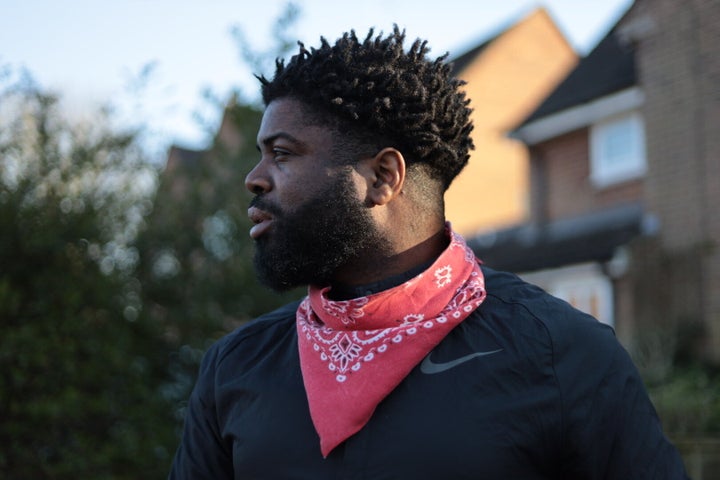
I was a fashion designer for around 15 years. I realized that the field had little room for meaningful cultural or aesthetic representation, so I became disillusioned and turned to academia.
“Criminality is always projected on to Black men in hoods, so I often wear hoodies.”
When I started, I would try so hard. I would make an effort to fit into academia’s idea of workwear. Looking back, it was horrendous ― I’d wear a shirt and bowtie with a blazer. It felt restrictive, but I guess back then as a young lecturer I felt the need to be respected. I was trying to be one of them. It was clearly a mistake.
Now, I enjoy breaking stereotypes with my personal style. I wear sneakers because they’re rebellious; everyone at university wears brogues or Oxfords. I couldn’t afford sneakers as a child, and I wear them to make my childhood self happy. Another example: Criminality is always projected on to Black men in hoods, so I often wear hoodies. Mainstream media conflates IQ and intent with appearance: Those who wear all-jersey sportswear are considered below the common class denominator, less intellectual. So I like creating a sense of surprise from people finding out that I’m a senior lecturer who wears Air Jordans and has dreads. I won’t let people tell me that I’m a criminal or trivialize me intellectually because of how I dress. I’m sure everyone would feel more comfortable if I wore a three-piece suit, but that won’t ever happen. Not even when they bury me.
Sometimes, colleagues or students will comment on or appreciate my “diverse” personal style, but to me the word itself is symptomatic of a problem. I dress as I dress, and think, “Diverse from what?” I don’t question why they wear ties and shirts even in the sweltering heat. On many occasions, I have been mistaken for a student. It’s interesting to see how my outward appearance measures on the scale of white respectability standards. I am proud of being a lecturer with a personal sense of dress built around Black culture, art and basketball.
“I’m sure everyone would feel more comfortable if I wore a three-piece suit, but that won’t ever happen. Not even when they bury me.”
White privilege is people thinking that it is OK to run their hands through my hair. Even as an adult, it has been very difficult to keep my calm when people think it’s acceptable to unpack my Blackness. I once shaved all my hair off ― before, I had a full set of twists, and I felt they were getting me into trouble. I felt that I was being profiled so I succumbed to the pressure, but it made no difference in terms of me being profiled or getting into trouble. It confused me even more in terms of my identity, how I should look and act. A career adviser once told me to cut my hair so I could get a “serious job.” I remember deciding at the time that I would grow my dreads, that I would never enter an industry where my hairstyle determined my job.
Ninety-nine point nine percent of the time, I am the only Black person in the room. The significance of that isn’t lost on me. In a predominantly white space, I have to modulate how I speak, act and dress. It can sometimes instigate me into my best English accent even as I’m agitated from the tightness of my shirt collar and tie cutting to my neck.
Courtney Cochran, ballerina, choreographer and Pilates trainer, New York

Whenever I’d tell people I was a dancer they’d say, “Oh, so you do hip-hop?” and I’d reply, “No, I do ballet.” Then that moment happens where they’d look at me like, “Bless your heart,” because they had already decided I wouldn’t make it that far; those were pre-Misty Copeland days.
When I was auditioning for ballet programs, I always had my pink tights and pink shoes. It was standard. I knew nothing else. It wasn’t until I was in the Alonzo King Lines BFA program that I found out about pancaking (the art of coating ballet shoes with thick makeup to match your skin tone). It changed my life. From there, I went straight into Dance Theatre of Harlem’s Professional Training Program, where flesh tone tights and shoes are the requirement and the standard. I felt powerful and confident seeing my whole body, fingertip to toe, reflecting my beautiful brown skin.
“I am still trying to unlearn the need to make white people feel more comfortable around me. I should not have to adjust. This world was made for me and my experiences, too.”
Since these experiences, I have refused to go back to pink. Each audition, I go in with my brown tights and brown shoes, usually the only one in a sea of pink, and get interesting stares. The majority of companies still see pink as the standard. This has limited the ballet companies that I feel I can ever be a part of because they don’t see my brown as beautiful. They see my brown as a sore thumb sticking out in the crowd that needs to be covered in order to keep their precious uniformity.
My hair, too, has always been a discussion. Constantly. Can you comb it? Can you put it in a bun? Can you do a middle part? Can it be straightened? How does it get so curly? How do you brush it? Can that go in a French twist? Black hair is seen as mysterious. It’s ridiculous. My hair texture happens to be different than yours ― get over it. Straight hair has always been seen as the beauty standard. Growing up in California, I straightened my hair in high school and college because I wanted boys to like me. It wasn’t until I moved to New York and was exposed to Black people of different cultures did I realize my natural hair was beautiful. I embrace it now; I am proud of my uniqueness.
Other cultures take our ideas, call them their own, then turn around and call us bitter. It angers me. It angers me that Kim Kardashian wears cornrows and has called them Bo Derek braids instead of acknowledging their origins in African culture. Or how Marc Jacobs had models wear “twisted mini buns” ― they are called Bantu knots and have been around much longer than him. But these styles on Black bodies are deemed inappropriate for school, for work, for ballet, etc. We are called “ghetto” and “distracting” while they get to be “innovative” and “new.”
Navigating the workplace while Black is a constant conversation in my family. I am still trying to unlearn the need to make white people feel more comfortable around me. I should not have to adjust. This world was made for me and my experiences, too. These adjustments have been so much a part of much life that it’s automatic. When I walk into the predominantly white Pilates studio, I immediately find myself speaking in a softer tone, being aware of my choice of words, making sure I’m not too “overbearing.” The same happens in the ballet studio, on the phone, through email, and all situations where I feel the need to present myself as “safe.” This is how I was trained to survive in this white world. My mother made sure I knew how to speak, write, and dress in a way that I’d be taken seriously; because she knew that if I did not, I would be denied opportunities.
Adrienne Kambouris, MD/PhD scholar and Army veteran, Baltimore
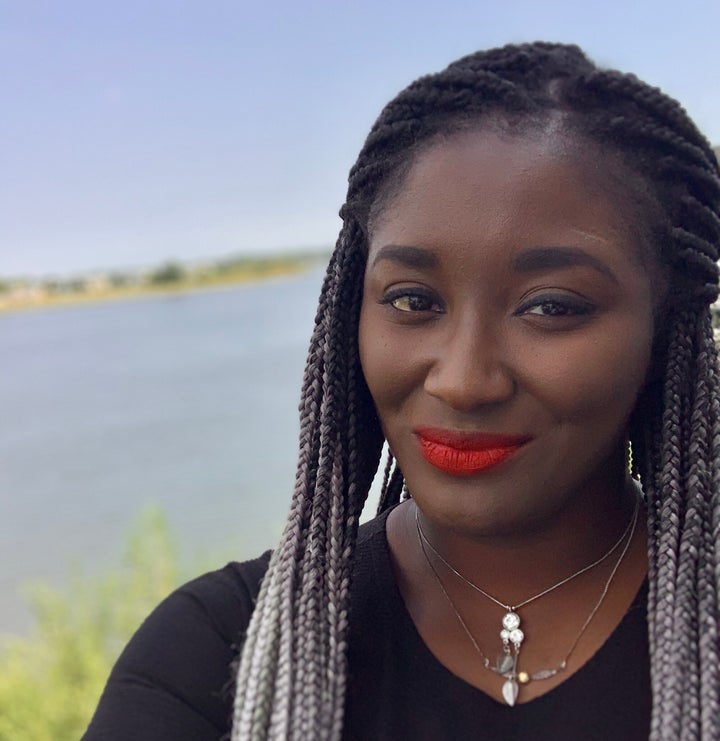
I’ve worked in two professional spaces thus far: the Army and medicine. In the Army, we are taught to honor the same value system, conform to uniformity and work as one unit to accomplish missions. Our appearance is regulated by Army Regulation 670-1. In it is every rule possible on how to style hair, makeup, fingernails, even how long mustaches and sideburns can be. We were one force and had to appear as such. However, some of the regulations were severely limiting to Black women, such as, “Females will ensure their hair is neatly groomed,” that the “length and bulk of the hair are not excessive,” and that hair may not “protrude from the head.” As someone with coarse, thick, 4C hair, this meant that I had to relax my hair in order to meet regulations. Regulations have changed to be more inclusive of Black women’s natural hair since my leaving, but this was not the case during my service.
I definitely muted my appearance during medical school interview season, and will likely do the same when applying to residency. Something I’ve learned in this process is that I do not want to give anyone a reason to tell me no, and that my appearance is an easy out. It’s frustrating, but also reality, especially in conservative spheres like medicine. I’ve made a conscious decision to not appear intimidating or aggressive. I consciously chose a more conservative, approachable hair style for my application photo and during my interview season (a short, relaxed bob). I didn’t wear lipstick, which is a staple in my life.
“I definitely muted my appearance during medical school interview season. ... Something I’ve learned in this process is that I do not want to give anyone a reason to tell me no, and that my appearance is an easy out.”
I wish to pursue plastic surgery in the future, and a popular elective augmentation is the Brazilian butt lift (BBL). This is a combination of liposuction and fat transfer to the buttock region to simultaneously minimize the waist and enhance the butt. Now, growing up and learning my history, I know that Black women were ridiculed, vilified and victimized for having this body type. In the 1800s, Black women were mocked and at the same time hypersexualized for simply living in the body that they were born in. This is just one example that personally resonates with me, but there are countless others.
I began teaching my children the importance of appearance and personal style early. It’s important for me to teach them this in a comfortable, safe space before society tries to teach them as adults. I want them to understand that they have agency over themselves and their bodies so they are later able to wear their personal style within the expectations of professional America without compromising themselves.
Aribella L. Parsons, client services representative and yoga practitioner, New Jersey
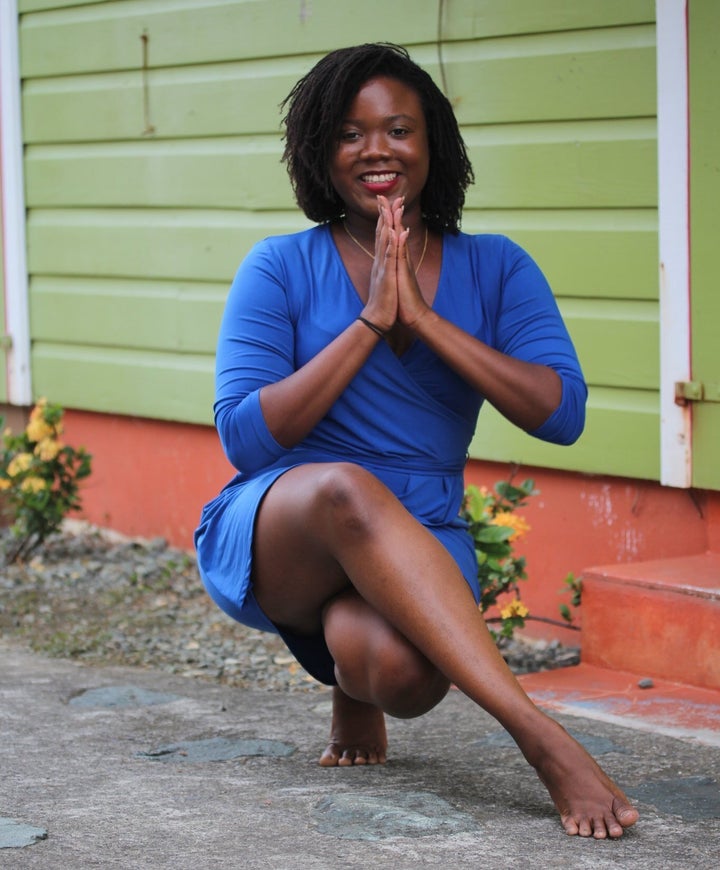
Imagine spending two or more hours washing, detangling and locking in every twist and curve of every strand on your head into your perfect wash-and-go, just to have someone ask if you planned on combing your hair. It’s heartbreaking. But I’ve been told countless times in the past to “comb my hair” because an Afro, puff or wash-and-go wasn’t “professional” or “appropriate” in corporate spaces. Standing for hours to do your hair, just to end up staring at your reflection and your latest flopped hairstyle is mentally draining. In my current field, I don’t see many women that look like me in higher positions, and I have yet to see one with an Afro.
“My hair twists and turns toward heaven and it is one of my connections to my ancestors.”
In my second year of college, I shaved my head. The stares I received were tough. It was emotionally difficult yet exhilarating ― I was reclaiming my body from the chemicals I routinely placed in it in hopes of fitting the Euro-centric ideal of “beauty.” I went natural to fit in; to fit in with my true self, and to fit in with who I was born to be. My hair twists and turns toward heaven and it is one of my connections to my ancestors. I was lucky to grow up in a time when Black women were taking control of how we define beauty by celebrating each and every inch of ourselves, especially the kinks and coils on our heads. Interestingly, while Black women still aren’t seen as the definition of beauty, our body is. Bigger hips and lips seem to be on many people’s wish lists.
“Imagine spending two or more hours washing, detangling and locking in every twist and curve of every strand on your head into your perfect wash-and-go, just to have someone ask if you planned on combing your hair. It’s heartbreaking.”
Coming from the British Virgin Islands in the Northern Caribbean, I’m most definitely guilty of code-switching ― I learned it at a young age when I first moved to the U.S. and kids teased me for pronouncing my “three” as “tree,” and not enunciating certain words to their standards. Having someone dismiss your point of view simply because of your accent is tough, so I learned to assimilate into certain groups in order to be respected as an intelligent equal. After years of self-regulating the way words roll off my tongue, I do not have the strong accent of my childhood. Now West Indian cultures and dialects are “hot” and yet I don’t allow many of my American friends to hear me speak in what’s left of my accent: it feels intrusive. When I’m home, I speak freely, going back and forth between “proper” English and dialect.
